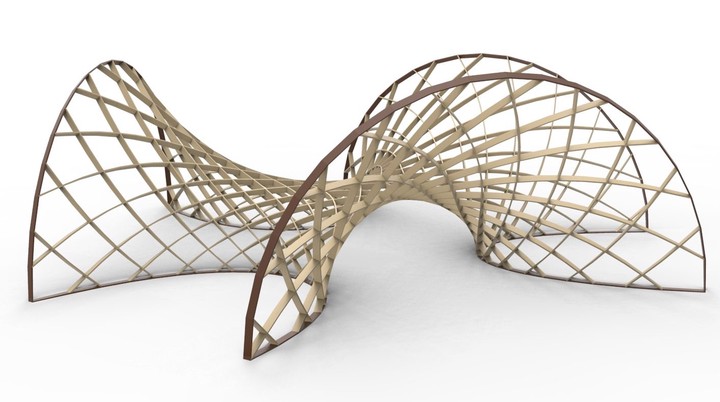Computational Design and Optimization of Quad Meshes Based on Diagonal Meshes
 By Caigui Jiang
By Caigui Jiang
Abstract
A significant amount of research in Architectural Geometry has dealt with skins and structures which follow a quadrilateral layout with double curvature. In many cases, such quad networks are computationally accessed by quad meshes which obey various constraints. These may concern planarity of faces, supporting structures which follow specific curvature paths, conditions on node angles, static equilibrium and others. In this paper we draw the attention to a new way of computing such constrained quad meshes. The new methodology is based on the diagonal meshes of a quad mesh and the checkerboard pattern of parallelograms one obtains by subdividing a quad mesh at its edge midpoints. The new approach is easy to understand and implement. It simplifies the transfer from the familiar theory of smooth surfaces to the discrete setting of quad meshes. This is illustrated with planar quad meshes and asymptotic nets, in particular with those exhibiting a constant node angle. The application of such networks has advanced fabrication-aware-design in the architectural practice. Looking at asymptotic nets specifically, we list their potentials and challenges for the construction of strained gridshells. The benefits of constant node angles are highlighted along different construction methods in timber and steel. We conclude with current developments, looking at less-restricted and transformable asymptotic structures, and how they are designed.
Supplementary notes can be added here, including code and math.